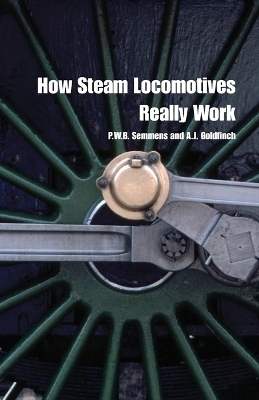
How Steam Locomotives Really Work
Seiten
2004
Oxford University Press (Verlag)
978-0-19-860782-3 (ISBN)
Oxford University Press (Verlag)
978-0-19-860782-3 (ISBN)
The technology underlying steam trains was one of the foundations of the industrial revolution in the 19th Century, and although it has since been replaced, steam trains can still be found all over the world, in preserved railways and museums. This book describes their components, and how they work; and considers their development over 150 years, all over the world.
Steam locomotives were developed in the early part of the 19th Century, initially by Trevithick, and then most successfully by George Stephenson, whose engine Locomotion inaugurated the famous Stockton and Darlington Railway in 1825. For the next 150 years, steam locomotives were further developed and refined, until the advent of new electrical technology superseded them. Although British Railways operated its last main-line steam locomotives in 1968, there is still immense interest in the large numbers of locomotives which have been privately preserved, and which run on heritage railways and in various parts of the world. This book describes the anatomy and physiology of the steam train, to enable all train enthusiasts to understand the workings of the various types of engines in use. It covers the design of the engine, the process of converting fuel into mechanical tractive effort to haul passenger and freight trains, and the function and design of the various components of the engine. The authors also outline the reasons behind the safe and efficient operation and maintenance of steam locomotives. Although the steam locomotive originated in the UK, there were parallel lines of development in North America and in various other European countries, many of which introduced their own individual features. These are dealt with in the book, which will appeal to railway enthusiasts throughout the world.
Steam locomotives were developed in the early part of the 19th Century, initially by Trevithick, and then most successfully by George Stephenson, whose engine Locomotion inaugurated the famous Stockton and Darlington Railway in 1825. For the next 150 years, steam locomotives were further developed and refined, until the advent of new electrical technology superseded them. Although British Railways operated its last main-line steam locomotives in 1968, there is still immense interest in the large numbers of locomotives which have been privately preserved, and which run on heritage railways and in various parts of the world. This book describes the anatomy and physiology of the steam train, to enable all train enthusiasts to understand the workings of the various types of engines in use. It covers the design of the engine, the process of converting fuel into mechanical tractive effort to haul passenger and freight trains, and the function and design of the various components of the engine. The authors also outline the reasons behind the safe and efficient operation and maintenance of steam locomotives. Although the steam locomotive originated in the UK, there were parallel lines of development in North America and in various other European countries, many of which introduced their own individual features. These are dealt with in the book, which will appeal to railway enthusiasts throughout the world.
Peter Semmens was formerly Deputy Head of the highly popular National Railway Museum in York from 1974, and has been active for many years in the popularization of science and technology. He has written 33 books on trains and railways, and in 1990 he was appointed Chief Correspondent of The Railway Magazine, having written the monthly 'Railway Practice and Performance' for many years. Alan Goldfinch was Chief Mechanical and Electrical Engineer, British Rail Eastern Region, until he retired in 1989.
Introduction ; 1. Why use steam? ; 2. Burning the fuel ; 3. Raising steam ; 4. Using the steam ; 5. Transmitting the power ; 6. The locomotive as a vehicle ; 7. The steam locomotive at work ; 8. Brakes ; 9. Designing a steam locomotive ; Index
| Erscheint lt. Verlag | 22.4.2004 |
|---|---|
| Zusatzinfo | numerous halftones and line illustrations |
| Verlagsort | Oxford |
| Sprache | englisch |
| Maße | 129 x 196 mm |
| Gewicht | 264 g |
| Themenwelt | Natur / Technik ► Fahrzeuge / Flugzeuge / Schiffe ► Schienenfahrzeuge |
| Geschichte ► Teilgebiete der Geschichte ► Technikgeschichte | |
| Technik ► Fahrzeugbau / Schiffbau | |
| ISBN-10 | 0-19-860782-2 / 0198607822 |
| ISBN-13 | 978-0-19-860782-3 / 9780198607823 |
| Zustand | Neuware |
| Informationen gemäß Produktsicherheitsverordnung (GPSR) | |
| Haben Sie eine Frage zum Produkt? |
Mehr entdecken
aus dem Bereich
aus dem Bereich
The Definitive Guide
Buch | Softcover (2024)
hidden europe publications (Verlag)
CHF 36,65
die visuelle Chronik der Schienenfahrzeuge
Buch | Hardcover (2024)
DK Verlag Dorling Kindersley
CHF 49,90
Vielfalt verbindet Baden-Württemberg
Buch | Softcover (2025)
VUD Medien (Verlag)
CHF 18,90


